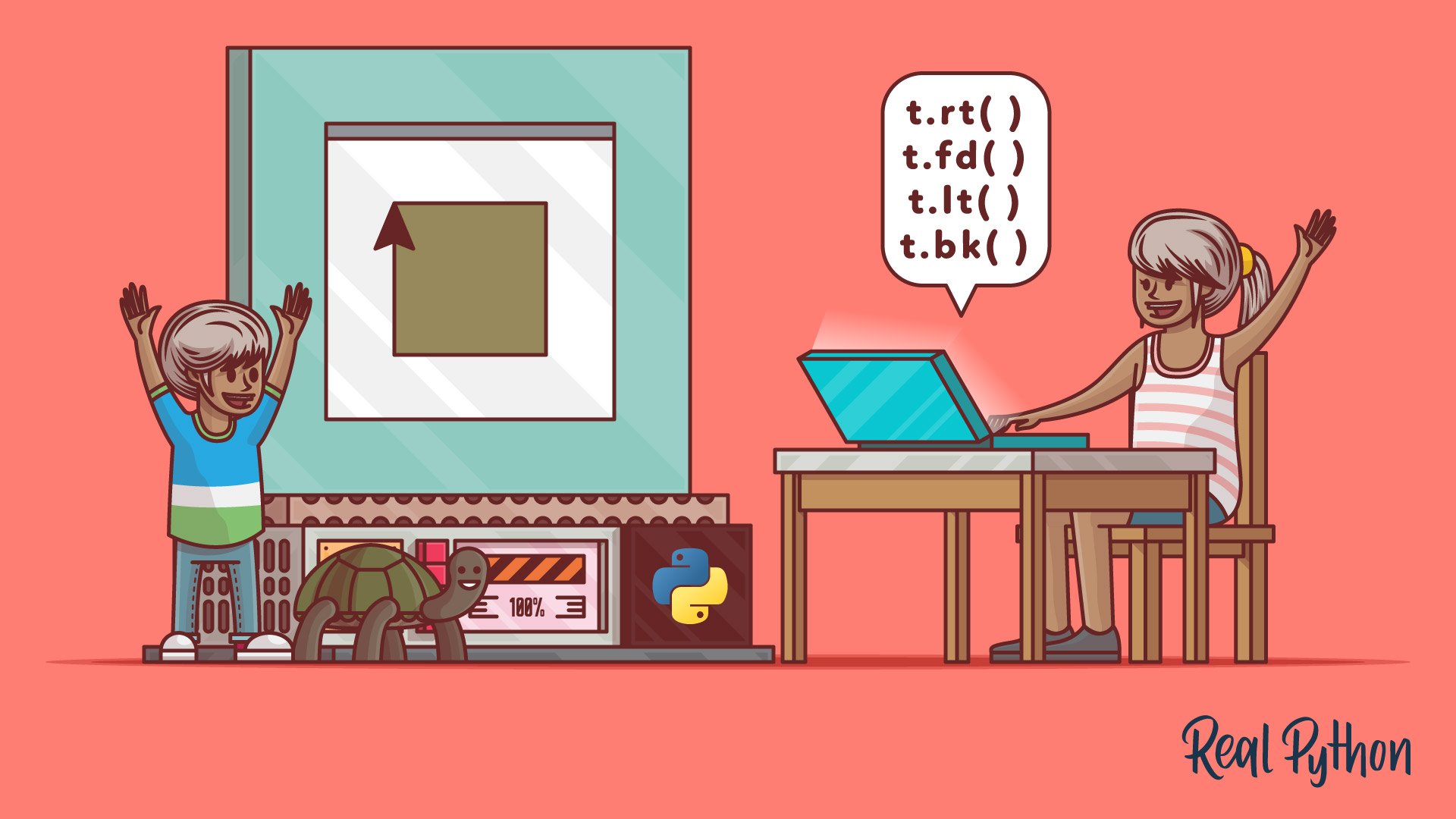
Episode 198: Build a Video Game With Python Turtle & Visualize Data in Seaborn
The Real Python Podcast
Can you build a Space Invaders clone using Python’s built-in turtle module? What advantages does the Seaborn data visualization library provide compared to Matplotlib? Christopher Trudeau is back on the show this week, along with special guest Real Python core team member Bartosz Zaczyński. We’re sharing another batch of PyCoder’s Weekly articles and projects.
Episode Sponsor:
Bartosz shares a Real Python step-by-step project for building a video game using the Python turtle module. The turtle module provides an interactive environment that lets users create pictures and shapes on a virtual canvas. The project takes you through game design concepts such as animating sprites, detecting a collision, and building a game loop.
We discuss another Real Python resource, “Visualizing Data in Python With Seaborn.” Seaborn is a significant next step if you’ve already been working with Matplotlib. It produces impressive visualizations and offers a functional or object-based approach to designing plots.
We also share several other articles and projects from the Python community, including a news roundup, finding Python Easter eggs, exploring whether Python has pointers, styling Excel cells with OpenPyXL, using weird tests to capture tacit knowledge, inspecting and running Django commands in a TUI, building reactive web UIs in Python, and a project for predictable Python datetimes.
This week’s episode is brought to you by Posit.
Course Spotlight: Python Turtle for Beginners
In this step-by-step course, you’ll learn the basics of Python programming with the help of a simple and interactive Python library called turtle. If you’re a beginner to Python, then this tutorial will definitely help you on your journey as you take your first steps into the world of programming.
Topics:
- 00:00:00 – Introduction
- 00:03:06 – Python 3.13.0 alpha 5 is now available
- 00:03:38 – Allow disabling the GIL with flags
- 00:04:17 – Django security releases issued: 5.0.3, 4.2.11, and 3.2.25
- 00:04:32 – The Python Coding Book
- 00:05:03 – Finding Python Easter Eggs – Code Conversation
- 00:12:48 – Sponsor: Posit
- 00:13:34 – Visualizing Data in Python With Seaborn
- 00:18:18 – Does Python have pointers?
- 00:21:43 – Build a Python Turtle Game: Space Invaders Clone
- 00:30:42 – Video Course Spotlight
- 00:32:04 – Styling Excel Cells with OpenPyXL and Python
- 00:35:22 – Use weird tests to capture tacit knowledge
- 00:37:09 – whenever: Strict, predictable, and typed datetimes
- 00:42:25 – hyperdiv: Build Reactive Web UIs in Python
- 00:46:19 – django-tui: Inspect and run Django Commands in a TUI
- 00:48:40 – Thanks and goodbye
News:
- Python Insider: Python 3.13.0 alpha 5 is now available
- Allow disabling the GIL with Flags - cpython - GitHub
- Django security releases issued: 5.0.3, 4.2.11, and 3.2.25 - Weblog - Django
- The Python Coding Book – The Python Coding Place
Show Links:
- Finding Python Easter Eggs – Code Conversation - Video Course – Python has its fair share of hidden surprises, commonly known as Easter eggs. From clever jokes to secret messages, these little mysteries are often meant to be discovered by curious developers like you!
- Visualizing Data in Python With Seaborn – In this tutorial, you’ll learn how to use the Python seaborn library to produce statistical data analysis plots to allow you to better visualize your data. You’ll learn how to use both its traditional classic interface and more modern objects interface.
- Does Python have pointers? - Ned Batchelder – Depending on how you’re using the term “pointer” changes the answer to the question. Read on to better understand the programming terminology and whether Python has pointers.
- Build a Python Turtle Game: Space Invaders Clone – In this step-by-step tutorial, you’ll use Python’s turtle module to write a Space Invaders clone. You’ll learn about techniques used in animations and games, and consolidate your knowledge of key Python topics.
- Styling Excel Cells with OpenPyXL and Python - Many Python libraries that deal with Excel only handle data, but OpenPyXL gives you the ability to style your cells in many different ways. Learn how to give your spreadsheets pizazz!
- Use weird tests to capture tacit knowledge - Applied Cartography – Sometimes adding code in one place means configuration elsewhere also needs to be updated. One way of ensuring this is happening properly in a large project is to use unit tests. This post covers a few examples, complete with pytest code.
Projects:
- whenever: ⏰ Strict, predictable, and typed datetimes
- hyperdiv: Build Reactive Web UIs in Python
- django-tui: Inspect and run Django Commands in a text-based user interface (TUI)
Additional Links:
- What’s the Zen of Python? – Real Python
- Using Python for Data Analysis – Real Python
- The Beginner’s Guide to Python Turtle – Real Python
- Roamer - The History of Turtle Robots
- Tutorial — openpyxl 3.1.2 documentation
- Ten Python datetime pitfalls, and what libraries are (not) doing about it - Arie Bovenberg
- The science behind why people hate Daylight Saving Time so much - Ars Technica
- Textual







